Stephen E. Braddock's Ireland Diary
Last evening in the pub I told two of the locals that I was taking a pass on going to the Cliffs of Moher and why.
They said it was only a 30-minute drive and that the mobs and tour buses don't get crazy until around 11:00am. I said I'd sleep on it.
I awoke early and it looked like it would be a clear and bright day, so I decided to give it a try. I bought a ticket online, which is 50% off, took a snap shot of my ticket on my phone, and headed south for the cliffs arriving a few minutes past 8:00am.
Much to my surprise, I was the ONLY car in the lot and there was not a bus in sight! The reception lady said I was the first of the day and that between 10:00am-11:00am it would become mayhem.
As I was leaving, about an hour later, after having some tea and a scone in the café, there were already eight coaches and more pouring in.
I was able to enjoy the views all alone!
The Cliffs of Moher are sea cliffs located at the southwestern edge of the Burren region in County Clare. They run for about 14 kilometers.
At their southern end, they rise 120 metres (390 ft) above the Atlantic Ocean at Hag's Head, and, eight kilometres to the north, reach their maximum height of 214 metres (702 ft) just north of O'Brien's Tower, a round stone tower near the midpoint of the cliffs, built in 1835 by Sir Cornelius O'Brien, then continue at lower heights. The closest settlements are Liscannor (6 km south) and Doolin, where 45’s golf club is located, much to the chagrin of the locals (7 km north).
From the cliffs, and from atop the tower, you can see the Aran Islands in Galway Bay, the Maumturks and Twelve Pins mountain ranges to the north in County Galway, and Loop Head to the south. The cliffs rank among the most visited tourist sites in Ireland, with around 1.5 million visits per annum.
I hope to get out to the Aran Islands on my next visit with Mom.
frbraddock
23 chapters
16 Apr 2020
Day 15: Cliffs of Moher. ALONE!!!
August 22, 2018
|
Cliffs of Moher, County Clare
Last evening in the pub I told two of the locals that I was taking a pass on going to the Cliffs of Moher and why.
They said it was only a 30-minute drive and that the mobs and tour buses don't get crazy until around 11:00am. I said I'd sleep on it.
I awoke early and it looked like it would be a clear and bright day, so I decided to give it a try. I bought a ticket online, which is 50% off, took a snap shot of my ticket on my phone, and headed south for the cliffs arriving a few minutes past 8:00am.
Much to my surprise, I was the ONLY car in the lot and there was not a bus in sight! The reception lady said I was the first of the day and that between 10:00am-11:00am it would become mayhem.
As I was leaving, about an hour later, after having some tea and a scone in the café, there were already eight coaches and more pouring in.
I was able to enjoy the views all alone!
The Cliffs of Moher are sea cliffs located at the southwestern edge of the Burren region in County Clare. They run for about 14 kilometers.
At their southern end, they rise 120 metres (390 ft) above the Atlantic Ocean at Hag's Head, and, eight kilometres to the north, reach their maximum height of 214 metres (702 ft) just north of O'Brien's Tower, a round stone tower near the midpoint of the cliffs, built in 1835 by Sir Cornelius O'Brien, then continue at lower heights. The closest settlements are Liscannor (6 km south) and Doolin, where 45’s golf club is located, much to the chagrin of the locals (7 km north).
From the cliffs, and from atop the tower, you can see the Aran Islands in Galway Bay, the Maumturks and Twelve Pins mountain ranges to the north in County Galway, and Loop Head to the south. The cliffs rank among the most visited tourist sites in Ireland, with around 1.5 million visits per annum.
I hope to get out to the Aran Islands on my next visit with Mom.
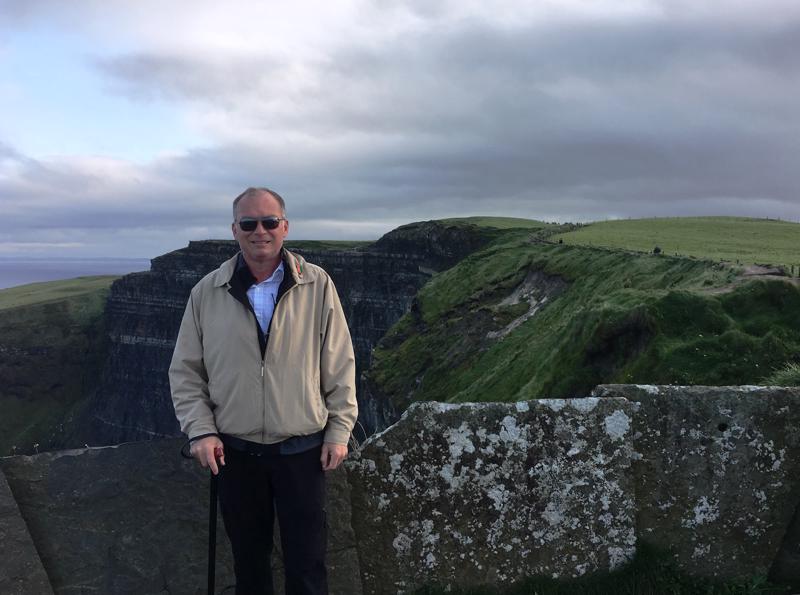
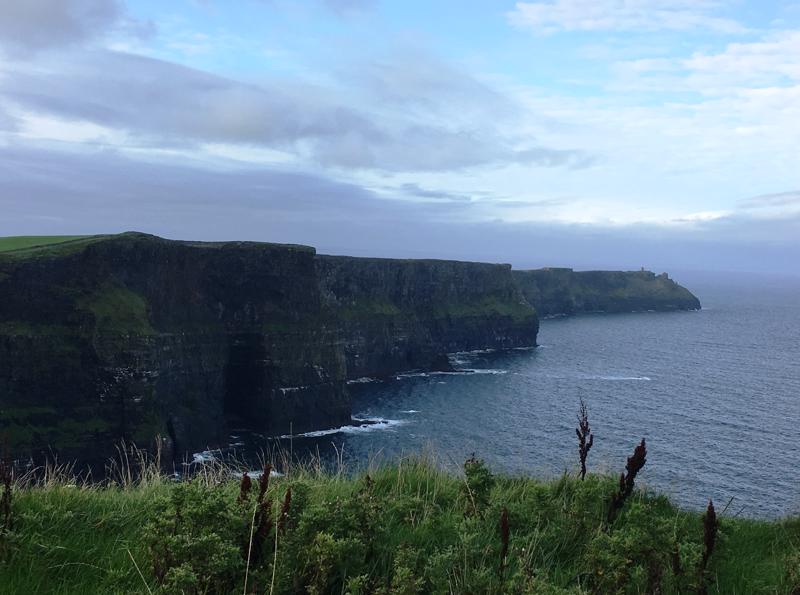
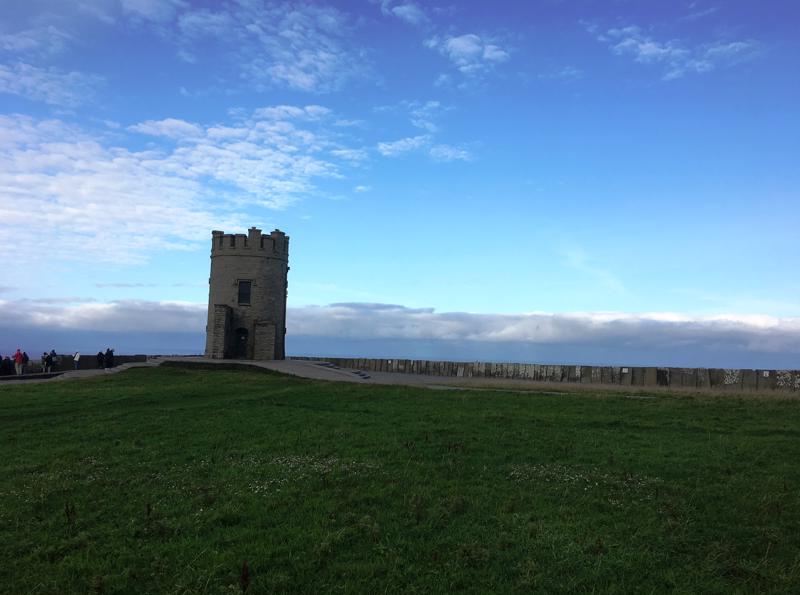
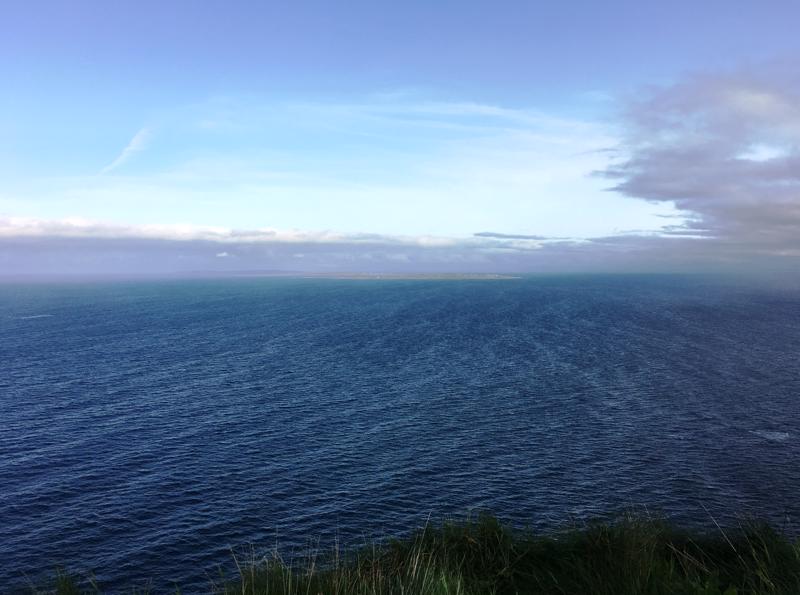
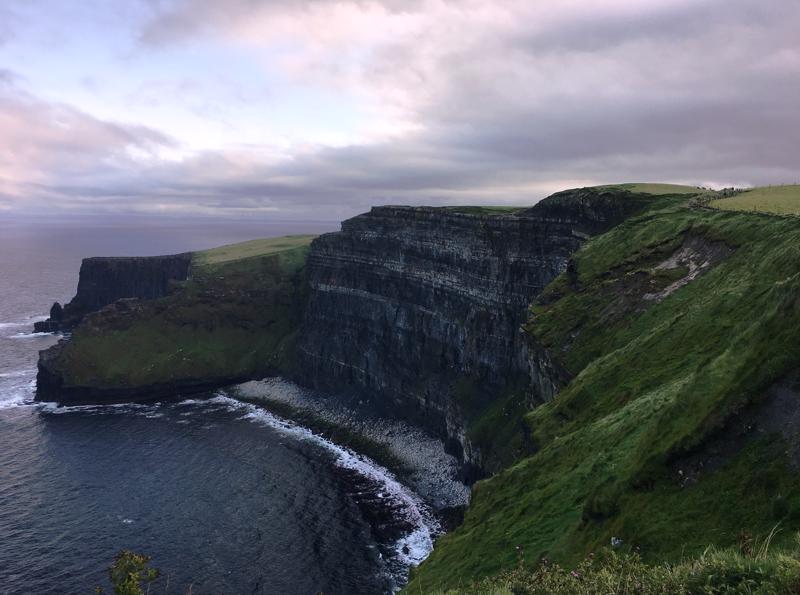

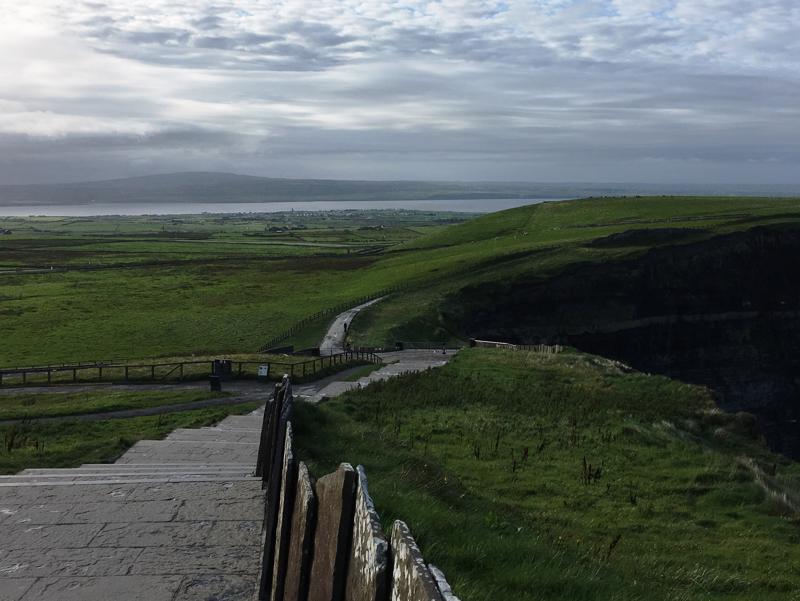
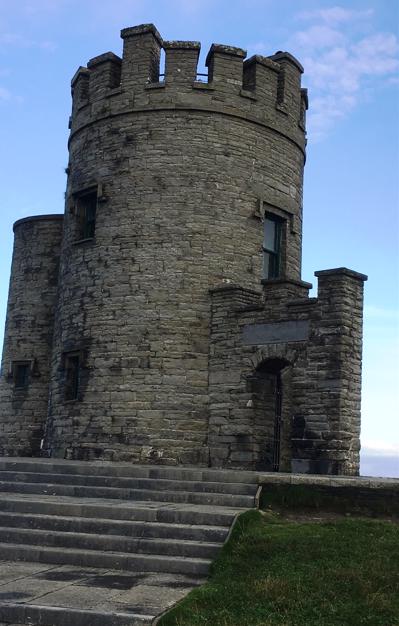
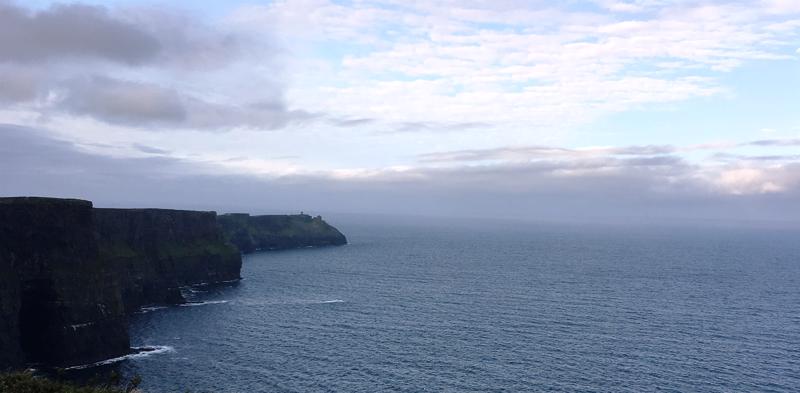
Corcomroe Abbey, dating back to the 12th century is named "Sancta Maria de Petra Fertilis", or Mary of the Fertile rock which describes its position in a sheltered, fertile green valley of the Burren, derived from the Irish, "Boireann" meaning a Stoney Place, surrounded by bare grey limestone mountains.
Further evidence is found in the carved flowers of the stone capitals, unique in Europe and thought to depict bluebells, or more likely the harebells commonly found throughout the Burren evidence of earlier religious settlements are found close by in the deserted churches at Oughtmana, suggesting a long history of ecclesiastical life in this once remote valley.
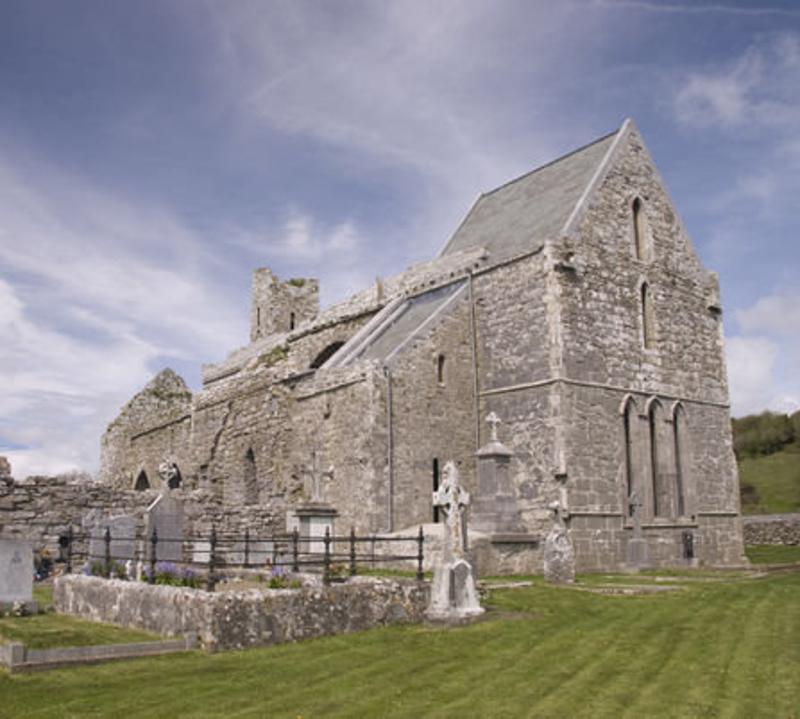
These were very wealthy baronies back then whose Bishop's feasted on the finest oysters in Ireland which came from nearby Dooneen Bay and gave their name "Bishop's Quarter" to the beach in Ballyvaughan.
Heavily patronized by noble lords and knights, in return for religious pardon for their wrong doing it seems their only reward in reality on this earth at least, was a cold carved stone effigy in a now deserted church and graveyard.
Corcomroe Abbey was brought back to life several years ago with a Dawn Mass on Easter Sunday initiated by the late John O’Donoghue who wrote "Anam Cara" (which is a good read), and sought to connect religion with local tradition, culture and the environment.
This was a very popular ecumenical event. Modern day pilgrims made the long silent walk up to the old abbey in darkness at about 5.30 am symbolizing the journey from darkness into light.
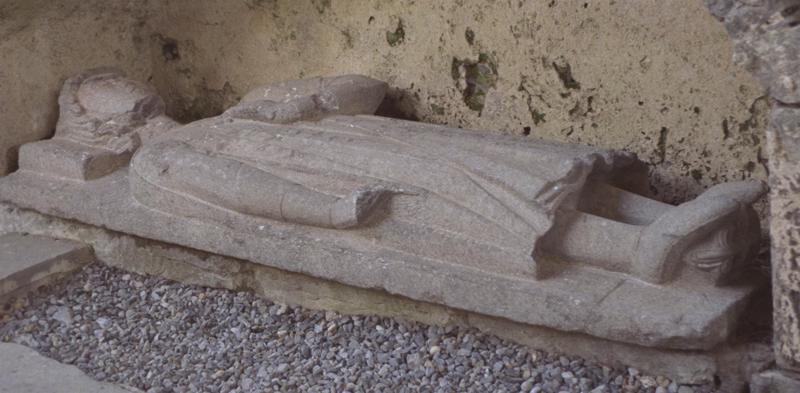
Newtown Castle is a 16th-century tower house, located close to the village of Ballyvaughan within the Burren area of County Clare, Ireland. Uniquely for a tower house of its type in Ireland, Newtown Castle is mostly cylindrical in shape but rises from a square pyramidical base. It is today part of the Burren College of Art.
Tomorrow morning I will continue north on the Wild Atlantic Way, through the Connemara National Park, and up to County Sligo, home of my maternal grandmother and ancestors.
County Sligo is in northwestern Ireland. It’s known for the legacy of local poet W.B. Yeats, whose grave is in a cemetery in Drumcliff.
On Friday I will attempt to locate my great grandparents graves and the home my grandmother grew up in.
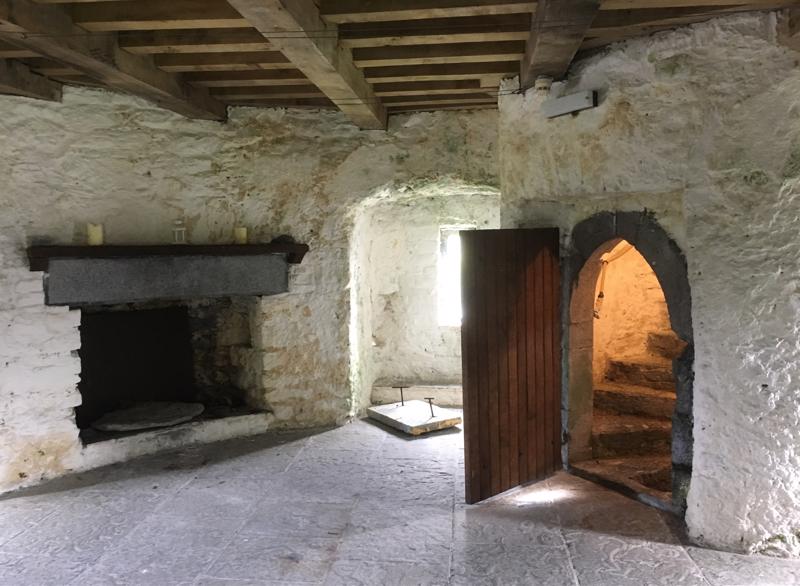
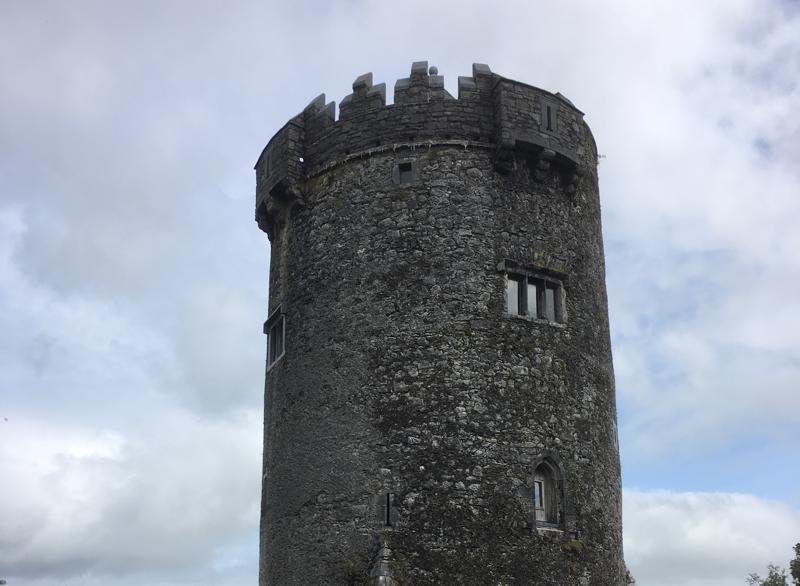

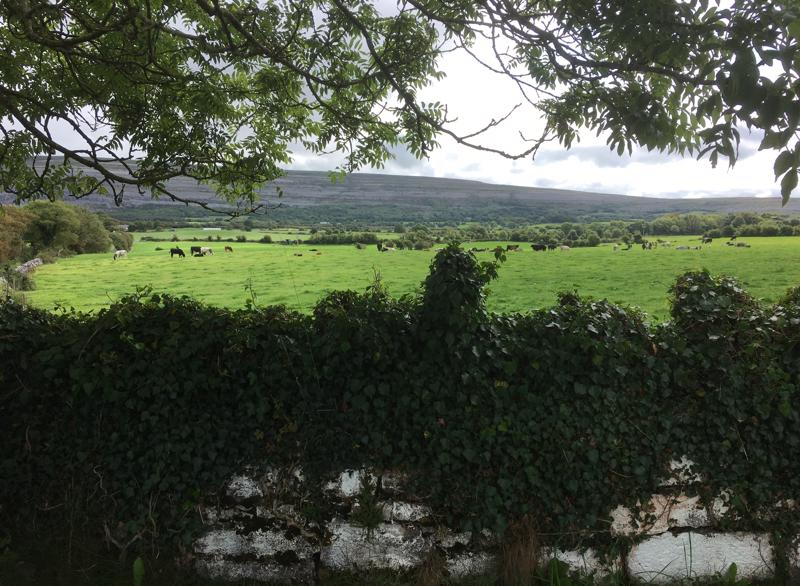
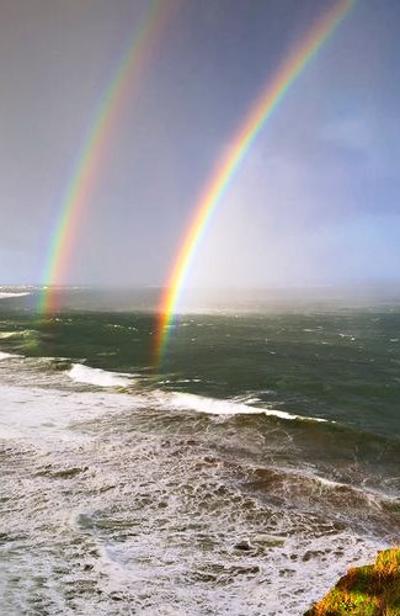
1.
Off to the Emerald Isle!
2.
Day 1: Dublin
3.
Day 2: Dublin
4.
Day 3: Dublin
5.
Day 4: Rosslare Harbour
6.
Day 5: Kinsale
7.
Day 6: Kinsale Part Two
8.
Day 7: The Wild Atlantic Way Begins...
9.
Day 8: The Wild Atlantic Way to Killarney
10.
Day 9: Tralee
11.
Day 10: Tarbert
12.
Day 11: Loop Head
13.
Day 12: Ballinasloe, Clarke Family History, & Knock Shrine
14.
Day 13: Galway City
15.
Day 14: Ballyvaughan - The Burren, County Clare
16.
Day 15: Cliffs of Moher. ALONE!!!
17.
Day 16: Connemara & Sligo
18.
Day 17: Sligo and Great Grandparents Devins
19.
Day 18: Roscommon & Athlone
20.
Day 19: Kildare, County Kildare & Dublin City
21.
Day 20: Mountjoy Prison, Dublin
22.
Day 21: Erin Go Bragh!
23.
Notes: Places I'd Stay Again
Share your travel adventures like this!
Create your own travel blog in one step
Share with friends and family to follow your journey
Easy set up, no technical knowledge needed and unlimited storage!